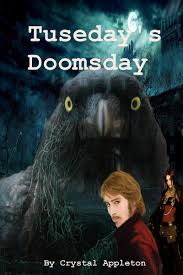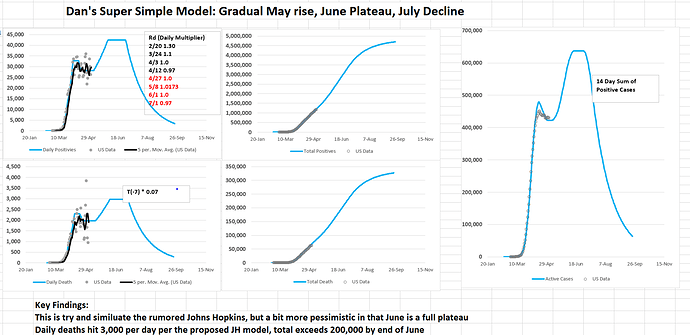I think that was “cubits”.
The biggest luck was Tom Hanks and especially Rudy Gobert. Sports shutting down woke up a lot of policy makers NOT in DC.
If we had gone another week with live sports we could be at 4x the deaths easily.
As for the poster who said not very contagious, think again. The long infective period and infection via a- or pre- symptomatic carriers is exactly the recipe for reproductive success for this thing. The standard model is that respiratory viruses use the bodies reactions like coughing, nasal secretion, sneezing, etc to hitch a ride out of the body. This thing requires only talking or any forceful exhale like from exercise.

The Chinese government didn’t lock down Wuhan until January 23 but then was able to get things pretty much under control with severe local measures in Hubei province. The thing I don’t understand about the theory that it was spreading in Wuhan back in November is, how did they avoid uncontrolled exponential spread in Shanghai or Guangzhou or other areas?
Surely there is significant travel between those cities and Wuhan and a much greater chance of multiple spreaders going to those places than Paris or Italy.
Here is my guess at what the JH model calling for 3,000 deaths per day might look like.
I assumed they assume on Rt of 1.1. I then translated that into my daily multiplier of 1.0173. Held that for all of May. Then flat Rt=1 for June. Then IDK how but a decline starting in July.
Just remember the IHME is just a variety of the idiotic whitehouse economist and Jared’s cubic model. It ain’t worth shit.
Omg sports guy Al on WIP this morning has a great idea.
Give all the protesters free cruise tickets. Let them Call it a protest cruise.
This is brilliant. Should set sail tomorrow.
https://twitter.com/econoryan/status/1257572390621478912?s=21
https://twitter.com/beingandychen/status/1257422328222359554?s=21
This is extremely interesting, especially in light of the fact that we don’t know for sure why regular cold and flu season is in the winter. It seems so obvious we have to have looked into whether that’s why cold and flu season dies off in the warmer months, right?
I’ve posted several times itt about a possible link between Vitamin D and immune systems.
Let’s say that Trump and Pence both got COVID-19 and were incapacitated in a week, and Pelosi was sworn in. She said find me the best modeler in the country, an intern stumbled onto your blog, and suddenly you were the White House Coronavirus Modeling Czar. You have infinite resources, and the country is counting on you to make the most accurate predictions possible.
In this scenario, you would not use one model for the whole country, right? You’d use a bunch of smaller regional models, then combine the outputs into the projections for the country at large, right?
The reason I ask is that when you assume an Rt of 1.1 for May, 1 or June, and a decline in July, you’re basically assuming that:
-
In May the decline in places like NYC, Seattle and California will somewhat offset the growth in red states that open up, so perhaps like half the population is at .8 and half is at 1.2 or something like that. I mean, some places are just going to get the full brunt of whatever the actual R0 is for this thing, right?
-
In June those places are locked back down because they realize they fucked up, so they get it back down to 1.
-
In July we get < 1 with basically everyone locked down.
In reality you’d want to go region by region and take into account travel between regions, mitigation strategies in each state (and even going down to city level), and then start combining, right? It’s not like there’s some formula to come up with the net-Rt, correct? Especially given that we’re literally guessing at what it’ll be based on various effects.
Yeah, this was huge. I was trying to work that into my We Didn’t Start the Fire remake, couldn’t make it rhyme with the lines that were available.
Chinese media fire back at Pompeo
China has never been one to take an accusation lying down, so when US Secretary of State Mike Pompeo recently made the claim that there was “enormous evidence” that the virus came from a Wuhan lab, Chinese state media wasted no time in firing back.
“Pompeo and Bannon are really a pair of natural liars and clowns” was the headline of an indignant commentary by the Chinese Communist Party’s mouthpiece People’s Daily. The piece, written in Chinese and carried widely by other Chinese media outlets, attacked Pompeo and former White House advisor Steve Bannon for similar recent claims accusing China of a virus cover-up.
Some outlets also pumped out critical pieces written in English aimed at an international audience. CGTN, the international arm of China’s state broadcaster, carried an opinion piece by a British analyst calling Pompeo a “disgrace”, while the hawkish Global Times newspaper said Pompeo’s claim was aimed at “fooling US voters” ahead of the upcoming election.
“It is foreseeable that this politician, who has lost his moral compass, will continue to surprise the world with his absurd theories and twisted facts,” said the commentary.
The Chinese media response, particularly from outlets more directly controlled by the state, can often be quicker and more raucous compared to the official government response. China’s foreign affairs ministry is yet to comment specifically on Pompeo’s claim, though in the past few weeks its government has engaged in a war of words with the US over who is to blame for the pandemic.
Some of that tension has played out in state propaganda, as seen in this cartoon released by state news agency Xinhua mocking the US.
Following video is a must watch
So the point I think you’re trying to make is that if something has an R0 of 3, and you infect three people over an average of three weeks, that’s not as dangerously contagious as something that has an R0 of 3 where you infect three people over an average of three days. Like you’d obviously rather be in the same room with the first person than the second, assuming the diseases are similarly dangerous.
That’s a fair point, but I think the key thing to remember with regard to COVID-19 is that most of the spread happens in the pre/a symptomatic time, which has an average of something like 5.7 days.
My theory would be that that’s because once you’re feeling some symptoms, you’re more likely to take some precautions, and some people get knocked right on their ass pretty quickly. Then, hypothetically, once it moves down into the respiratory tract, you may actually need a cough to spread it as opposed to just talking loudly. Maybe the reason more of the spread is early is because that’s when the virus is shedding in your throat.
The next point I’d make is that there could be a TON of variance in individual R0 relative to other viruses. I have no idea, but it’s possible that with something like the flu or something else, there are fewer super spreaders and fewer people who don’t get anyone sick… This thing seems to cause some really bad outbreak clusters when the wrong situations are combined.
We wont know for a long time, if ever, but it’s possible that the variance is why you see it seem to blow up out of nowhere really fast in some places, and stay below the surface in other places for a while until it hits a critical mass. In order to really drill down into this we’d need immense amounts of testing, because there’s always the possibility as well that the early cases were just being misdiagnosed and mischaracterized because nobody was checking.
Then once we did know about it, we didn’t have the testing capacity to even begin to grasp the actual magnitude without making assumptions/projections. Keep in mind that early on we thought the IFR was like 1.5-3%, now we think it’s .5% to .7%. That’s another way of saying 2 to 6 times as many people had it in Seattle and NYC than we thought back when we were trying to guess the real size of this thing related to testing and deaths. Throw in the deaths we didn’t count, etc… It’s very possible this thing was spreading way worse than we realize, and the reason we all think it wasn’t is simply that we were clueless.
Lol how do these clown shoe wearing frauds keep getting significant work?
Because they’re not looking for an accurate model, they’re looking for one that lets them justify shifting the country from a war time footing to OPEN FOR BUSINESS without explicitly telling everyone that we’re dying to save the Dow.
Most observations I’ve seen have the number of infections doubling roughly every 3 days. If day 1 has 50 infections, day 44 will break through the 1,000,000 mark.
It’s highly infectious but not so highly deadly, especially for healthy people under 60.
This seems kind of silly to me. If it leaked from a Wuhan lab, how the hell would we know? What evidence would there be? Like if they were studying a naturally occurring coronavirus in bats, how in the world would we trace it back to the lab?
Also, all of the talk about a likely species between bats and humans that we cannot identify seems to perhaps throw some gasoline on that fire. Maybe the jump from bats to humans was made by someone making a careless mistake in the lab and infecting themselves, then strolling over to the wet market.
Well it’s intended as a factual response to the US government saying “We’ve seen evidence of it”, which is even more stupid and a lot more dangerous.
That’s WMD all over again.
Right, so if there was one case in Washington on say December 1 (I’m randomly picking a date to make a point), even, you’d be looking at projected case totals of:
Dec 1: 1
Dec 4: 2
Dec 7: 4
Dec 10: 8
Dec 13: 16
Dec 16: 32
Dec 19: 64
Dec 22: 128
Dec 25: 256
Dec 28: 512
Dec 31: 1,024
Seems like a good point to pause and point out that we were only testing people who had recently been in China, so the only way we’d identify this would be through medical workers figuring out something was weird without even looking for it. By 12/31 you’d have 2,047 cases that you’d expect to lead to 10 deaths, and of course the deaths lag by 2-4 weeks.
Jan 3: 2,048
Jan 6: 4,096
Jan 9: 8,192
Jan 12: 16,384
Jan 15: 32,768
Jan 18: 65,536
Jan 21: 131,072
I believe this gets us to the first official case. We’re now expecting 1,311 deaths, but if you assume a three week lag in deaths, we’re only at 10 so far… Very easy to imagine those all being classified as pneumonia, and if you managed to mostly avoid vulnerable populations, you could have an even lower total. Also keep in mind that if the public isn’t worried about it, people may just think they have a bad cold/flu and try to ride it out until it’s too late.
It’s very easy for this to spread unnoticed in an area for a couple months if you’re not testing for it or looking for it in any way.
